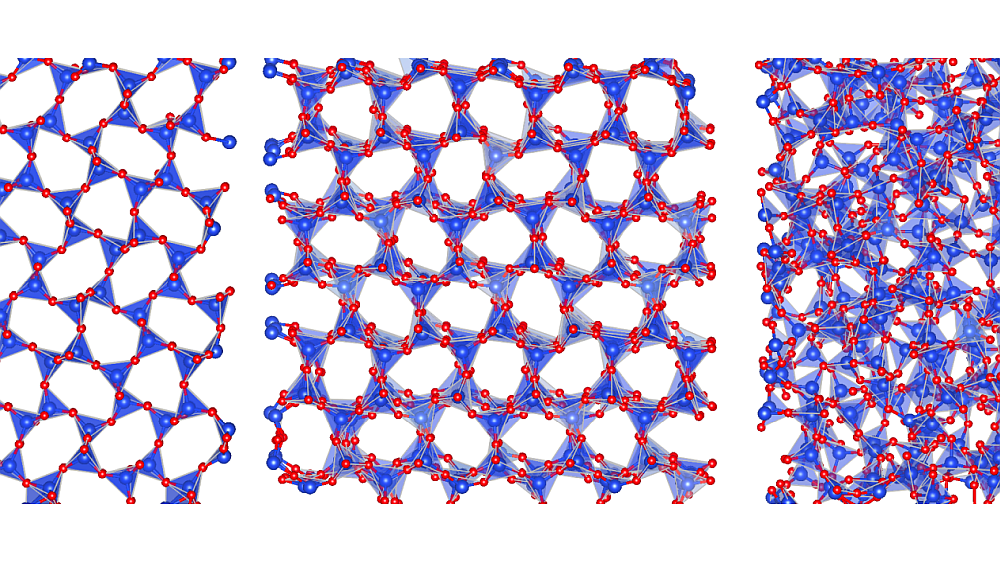There is some pretty interesting work underway on ceramic materials for ultra-high temperature applications. Service temperatures of more than 1,500°C requires the use of ceramic materials rather than refractory alloys. Development of these ceramics is driven mostly by aerospace applications, such as hypersonic vehicles and thermal barrier coatings for jet engines, and nuclear energy applications, such as nuclear fuels and accident scenarios.
At those temperatures, the pool of candidate materials is not large. For example, a material system being considered for hypersonic vehicles is refractory (Zr, Hf) boride-silicon carbide composites, which will experience temperatures above 2,000°C where they are sure to form zirconium and hafnium oxides at the leading edges. A proper understanding of zirconia formation is important, too, to understanding (and thus controlling) how zirconium alloys passivate in loss-of-coolant nuclear accidents.
Sophisticated modeling techniques have accelerated the pace of development for these materials and allow researchers to test scenarios that are experimentally challenging. However, the old computer engineer’s maxim still applies, “Garbage in — garbage out.” That is, a simulation is only as good as the data it uses.
In a new paper in the Journal of the American Ceramic Society (available online in Early View), Sergey Ushakov and Alexandra Navrotsky reviews methods for measuring high temperature thermophysical properties. In the paper, the duo says, “The free energy change for an reaction can be calculated if the heat capacities, standard enthalpies and entropies of formation, and enthalpies and temperatures of phase transformations are known for all products and reactants.” But, they go on to observe that such data are often not available at temperatures over 1,500°C, and even when they are, they are subject to revision as better methodologies improve. They give the example of the melting temperature of MgO, which has been revised by hundreds of degrees in the last decade. Nevertheless, they note, “Thermodynamics is the most reliable tool for scientific predictions of materials stability we have at our disposal.”
They also warn that simulation has its limits, especially (in this context) with regard to calculated phase diagrams (CalPhaD) and first-principles ab initio calculations. They cite Saunders and Miodownik, authors of a definitive book on CalPhaD, who point out that very accurate CalPhaD diagrams of multicomponent systems can be generated provided that the binary and ternary subsystems are available. They note that Saunders and Miodownik say, “it is in reality impossible to make predictions for the phase diagrams of binary systems to any degree of accuracy, which would be acceptable for practical purposes.” Similarly, first-principles calculations require some approximations that compromise their accuracy.
The first essential requirement for measuring high temperature properties is accurate measurement of temperature, and the key is to choose the right method for the temperature regime. Temperatures can be measured by thermocouples or by optical pyrometry, and at these high temperatures, there are subtleties to be aware of with both, and Ushakov and Navrotsky review them thoroughly.
The paper goes on to review how to measure melting point and how to determine phase diagrams in refractory systems. Calorimetry measures “heat effects from reaction or during heating and cooling,” and is used to measure heat capacities and standard entropies and enthalpies of formation. It also locates phase transformation and melting points. There are a number of calorimetric methods, and the paper reviews their use, set-up, calibration and limitations. Included are drop calorimetry, combustion calorimetry, solution calorimetry and the flash method. The authors also discuss other important high temperature measurements including vapor pressure measurement and volume measurement (using high temperature dilatometry).
The authors present two case studies to illustrate. The first is a determination of fusion enthalpy of La2O3. It has been known for some time that below the melting point, rare earth oxides from lanthanum to samarium undergo reversible phase transformations from hexagonal A-type to H-type to cubic X-type, but the transformation enthalpies have not be measured. The authors show us the experimental set-up, and offer an analysis of the uncertainty and accuracy of the outcome. The experimental temperatures were 2,000-2,300+°C. They present a similar evaluation for a premelting phase transition in Y2O3 that occurs at about 2,400°C.
The article covers a lot of ground in just 16 pages and 190 references. While it is not a review article in the strict sense, it is a thorough, very readable summary of the issues and challenges that attend high temperature thermophysical data. Researchers who need to use, evaluate and interpret such data will find this article is a handy and useful tutorial.
The paper is titled, “Experimental Approaches to the Thermodynamics of Ceramics above 1,500°C” (doi: 10.111/j.1551-2916.2012.05102.x).
Author
Eileen De Guire
CTT Categories
- Modeling & Simulation


